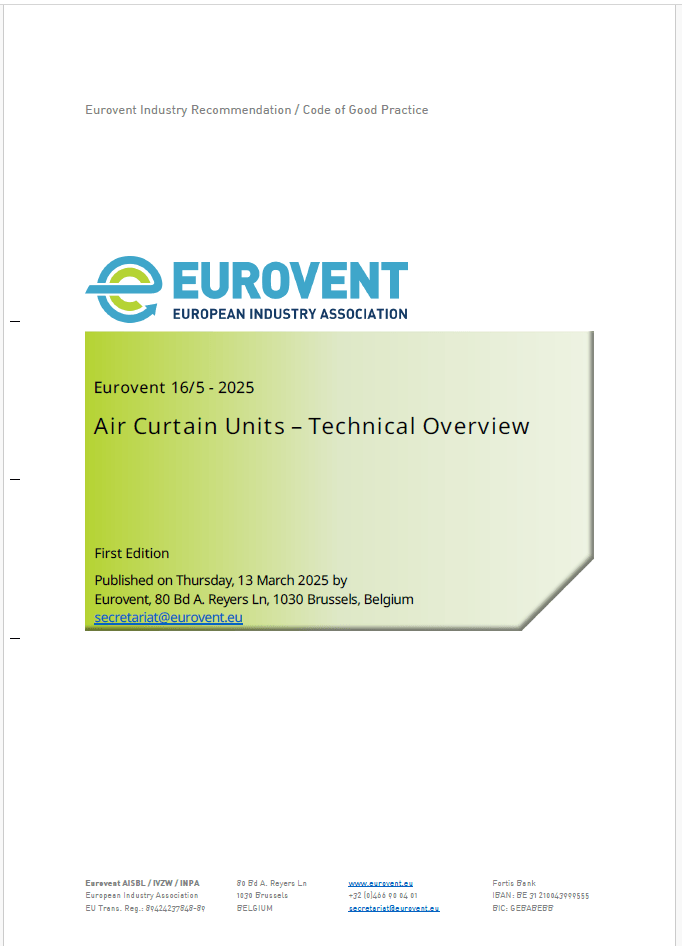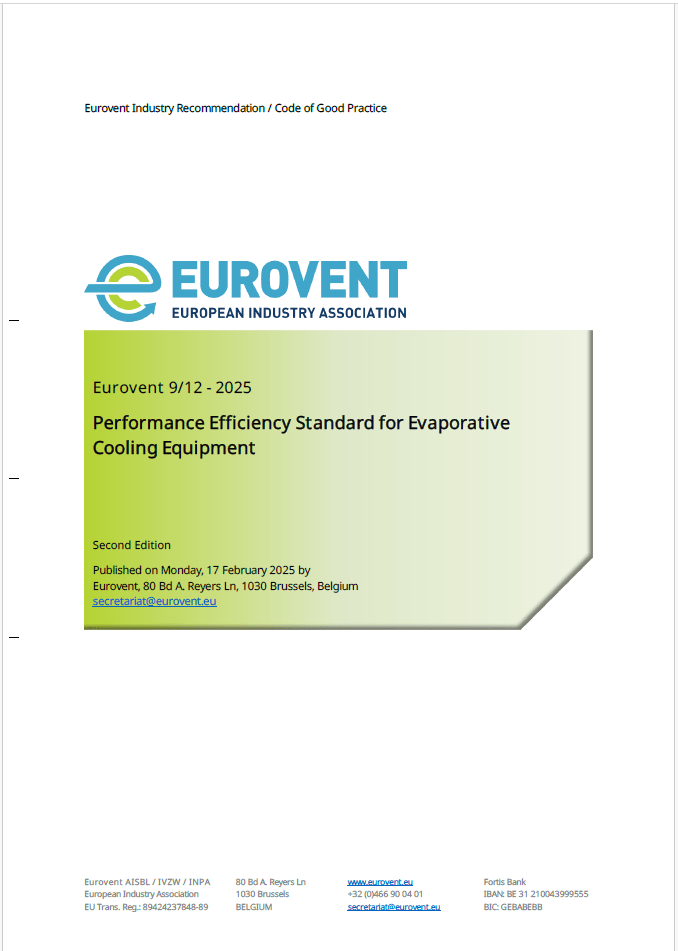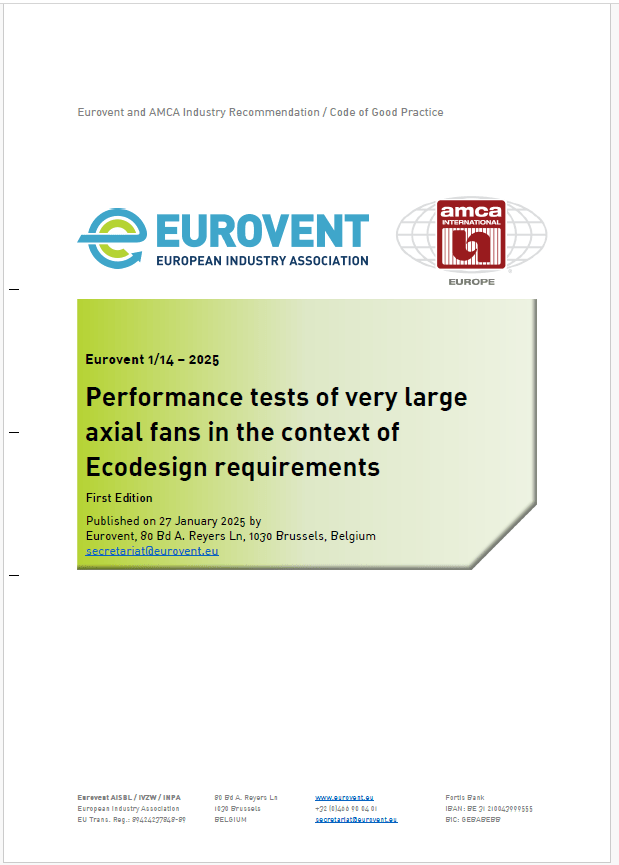With the pandemic raging across the globe, our built environment has become high risk areas for transmissions. Eurovent Middle East traces the construction trends brought on by the economic upheaval caused by COVIDeurovent-market-intelligence/news/eurovent-market-intelligence/-19 and the role ventilation equipment will play in the future of the HVACR industry.

 The COVIDeurovent-market-intelligence/news/eurovent-market-intelligence/-19 pandemic has fundamentally changed the course of countries, businesses and individuals alike, with many still struggling to find their bearings amidst the socio-economic disruptions caused by the virus. As Lubna Shaikh, Senior Manager Business Development, Trosten, points out, the pandemic affected the USD 90 trillion global economy unlike anything the world has experienced in nearly a century. ‚ÄúThe highest impact was on aviation and hospitality sectors in the Middle East,‚ÄĚ she says. ‚ÄúAnd in my opinion, the impact on the construction industry has just started hitting the tip of the iceberg.‚ÄĚ
The COVIDeurovent-market-intelligence/news/eurovent-market-intelligence/-19 pandemic has fundamentally changed the course of countries, businesses and individuals alike, with many still struggling to find their bearings amidst the socio-economic disruptions caused by the virus. As Lubna Shaikh, Senior Manager Business Development, Trosten, points out, the pandemic affected the USD 90 trillion global economy unlike anything the world has experienced in nearly a century. ‚ÄúThe highest impact was on aviation and hospitality sectors in the Middle East,‚ÄĚ she says. ‚ÄúAnd in my opinion, the impact on the construction industry has just started hitting the tip of the iceberg.‚ÄĚ

 Avin Gidwani, Chief Executive Officer, Industry Networks (FZC), describes the regional and global commercial real estate situation as being in the doldrums. ‚ÄúBusinesses that are in the early part of the construction cycle have started feeling the economic pain, while businesses that participate in the latter parts of construction are still doing very well,‚ÄĚ he says. ‚ÄúThis is due to abrupt and drastic decline in new contract awards, while the large volume of existing work is pushed to completion.‚ÄĚ Shaikh echoes this, adding that the continuation of projects under construction is still dependent on the flow of funds from developers.
Avin Gidwani, Chief Executive Officer, Industry Networks (FZC), describes the regional and global commercial real estate situation as being in the doldrums. ‚ÄúBusinesses that are in the early part of the construction cycle have started feeling the economic pain, while businesses that participate in the latter parts of construction are still doing very well,‚ÄĚ he says. ‚ÄúThis is due to abrupt and drastic decline in new contract awards, while the large volume of existing work is pushed to completion.‚ÄĚ Shaikh echoes this, adding that the continuation of projects under construction is still dependent on the flow of funds from developers.

 Frank Taaning-Grundholm, Vice President Global HVACR Sales, ABB, says that many companies are now also eager to learn from the pandemic, capture the benefits of the remote working structure and possibly down scale offices to accommodate a more flexible working culture. ‚ÄúThis has put a halt on a lot of projects, which were already in the pipeline, but where construction had not commenced yet,‚ÄĚ he says. ‚ÄúIt has also increased the focus on the risk of large open offices, as the exposure to infections is much higher when you have many people in the same room, so we might see smaller offices or sectioned office spaces more in new buildings.‚ÄĚ
Frank Taaning-Grundholm, Vice President Global HVACR Sales, ABB, says that many companies are now also eager to learn from the pandemic, capture the benefits of the remote working structure and possibly down scale offices to accommodate a more flexible working culture. ‚ÄúThis has put a halt on a lot of projects, which were already in the pipeline, but where construction had not commenced yet,‚ÄĚ he says. ‚ÄúIt has also increased the focus on the risk of large open offices, as the exposure to infections is much higher when you have many people in the same room, so we might see smaller offices or sectioned office spaces more in new buildings.‚ÄĚ
Gidwani shares a similar observation: ‚ÄúAt present there is no logical case to be made for the growth of office space as remote working models have proved to be extremely effective for numerous positions across almost all industries.‚ÄĚ He adds that demand for retail space is also under pressure due to the popularity of online shopping, though recovery is expected as people require social spaces. ‚ÄúThe configuration and use of retail spaces is accordingly changing and one can expect significant churn as traditional retail businesses that don`t make the transition to a digital model are replaced by new businesses,‚ÄĚ he says. ‚ÄúIn this game of survival, Dubai is clearly still the fittest and is evolving fast to adapt to a post-COVID world.‚ÄĚ
What does this mean for the HVACR industry?
Speaking on the domino effect these trends have had on the HVACR industry, Shaikh says the impact of COVIDeurovent-market-intelligence/news/eurovent-market-intelligence/-19 was felt by companies during the second quarter of 2020 with the supply chain being challenged by delayed delivery of raw materials due to closed factories, shipping delays, sterilisation processes across borders and limited workforce, which, in turn, slowed down construction. ‚ÄúThe construction sites were also affected with the virus infection spread rate among the labourers,‚ÄĚ she says. ‚ÄúBy practicing social distancing norms, transportation with limited numbers per vehicle also served as a huge hindrance for the construction business, ending up with more operational costs.‚ÄĚ Shaikh says the trend of lower budgets and value engineering proposals pre-COVID will also be magnified in the current scenario, as organisations try to cut down expenses in terms of capital, budgets and overheads to keep business afloat. ‚ÄúUnder this scenario, I think the clients would wait and hold on to their cash reserves at least until mid-2021 to monitor the situation,‚ÄĚ she says.

 Weighing in, Iyad Al Jurdy, Regional Director, LG Electronics Middle East and Africa, says that although the aftershock was largely contained, thanks to the resilience of the regional construction market, COVIDeurovent-market-intelligence/news/eurovent-market-intelligence/-19 has reshaped the way different manufacturers and stakeholders view the market. ‚ÄúAs the ‚Äėnew norm‚Äô kicked in, the market started to partially regain its momentum, slowly but surely,‚ÄĚ he says. ‚ÄúSo, in terms of the pipeline, the total volume of new awarded projects was affected largely and, to a lesser extent, the total volume of the construction projects‚Äô pipeline.‚ÄĚ
Weighing in, Iyad Al Jurdy, Regional Director, LG Electronics Middle East and Africa, says that although the aftershock was largely contained, thanks to the resilience of the regional construction market, COVIDeurovent-market-intelligence/news/eurovent-market-intelligence/-19 has reshaped the way different manufacturers and stakeholders view the market. ‚ÄúAs the ‚Äėnew norm‚Äô kicked in, the market started to partially regain its momentum, slowly but surely,‚ÄĚ he says. ‚ÄúSo, in terms of the pipeline, the total volume of new awarded projects was affected largely and, to a lesser extent, the total volume of the construction projects‚Äô pipeline.‚ÄĚ

 Naveen Sivakumar, Head of Marketing and Business Development, Danfoss Turkey Middle East and Africa, shares that following the onset of COVID, general sales in the industry has been down by 10%, but that at the same time it has become clear how vital HVACR industries are to ensure hospitals, data centres and other critical infrastructure keep on running. ‚ÄúThe market needs retrofit, and we are seeing that governments are realising the importance of focusing on driving down emissions by encouraging energy efficiency in retrofits,‚ÄĚ he says. Al Jurdy adds that retrofit projects have also seen its share of disruptions, due to the uncertainty surrounding the return to normal operations and complexity of retrofitting larger buildings. ‚ÄúOn one hand, we‚Äôve seen a slowdown in the commercial office buildings‚Äô retrofits, while hospitality retrofits continued, taking advantage of the low occupancy rates,‚ÄĚ he says. ‚ÄúThe same trend was noticed in the healthcare vertical in an effort to build new COVIDeurovent-market-intelligence/news/eurovent-market-intelligence/-19 isolation sections at the existing hospitals.‚ÄĚ
Naveen Sivakumar, Head of Marketing and Business Development, Danfoss Turkey Middle East and Africa, shares that following the onset of COVID, general sales in the industry has been down by 10%, but that at the same time it has become clear how vital HVACR industries are to ensure hospitals, data centres and other critical infrastructure keep on running. ‚ÄúThe market needs retrofit, and we are seeing that governments are realising the importance of focusing on driving down emissions by encouraging energy efficiency in retrofits,‚ÄĚ he says. Al Jurdy adds that retrofit projects have also seen its share of disruptions, due to the uncertainty surrounding the return to normal operations and complexity of retrofitting larger buildings. ‚ÄúOn one hand, we‚Äôve seen a slowdown in the commercial office buildings‚Äô retrofits, while hospitality retrofits continued, taking advantage of the low occupancy rates,‚ÄĚ he says. ‚ÄúThe same trend was noticed in the healthcare vertical in an effort to build new COVIDeurovent-market-intelligence/news/eurovent-market-intelligence/-19 isolation sections at the existing hospitals.‚ÄĚ
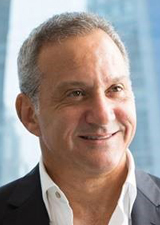
 Tariq Al Ghussein, CEO, Taqeef, and President, Eurovent Middle East, believes that overall, the momentum will remain steady, considering in the region ‚ÄėHVAC is a necessity and not a luxury‚Äô. ‚ÄúI‚Äôm fairly confident that product demand and project pipelines will remain buoyant, despite the changing economic landscape,‚ÄĚ he says, adding that for Taqeef, consumer demand has soared as more people spend time at home. ‚ÄúWe have also seen heightened interest in retrofitting with consultants and business owners looking more closely at how we make our built environment as healthy a place as it can be,‚ÄĚ he says. ‚ÄúLooking to better indoor air quality (IAQ) and greener, cleaner technologies is a key strategic focus for most of our members and we see this as a significant growth area.‚ÄĚ
Tariq Al Ghussein, CEO, Taqeef, and President, Eurovent Middle East, believes that overall, the momentum will remain steady, considering in the region ‚ÄėHVAC is a necessity and not a luxury‚Äô. ‚ÄúI‚Äôm fairly confident that product demand and project pipelines will remain buoyant, despite the changing economic landscape,‚ÄĚ he says, adding that for Taqeef, consumer demand has soared as more people spend time at home. ‚ÄúWe have also seen heightened interest in retrofitting with consultants and business owners looking more closely at how we make our built environment as healthy a place as it can be,‚ÄĚ he says. ‚ÄúLooking to better indoor air quality (IAQ) and greener, cleaner technologies is a key strategic focus for most of our members and we see this as a significant growth area.‚ÄĚ
The price of inaction
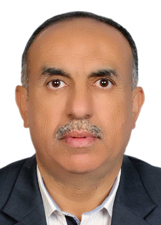
 The need to focus on IAQ has been a long time coming especially in the context of the pandemic. As Burhan Jaber, Engineering and R&D Director, SKM, points out, ventilation is an essential parameter that should be taken into consideration during the stage of building design. ‚ÄúVentilation is linked with Indoor Air Quality (IAQ), that marks its importance and the demand of maintaining proper ventilation has been increased after the pandemic,‚ÄĚ he says. ‚ÄúOutside air ventilation is also one of the successful proven methods used to dampen the spread of viruses, especially for the people who stay at home most of the time.‚ÄĚ Dr Iyad Al-Attar, Independent Air Filtration Consultant, says, the role of HVAC systems and air filters in combatting COVIDeurovent-market-intelligence/news/eurovent-market-intelligence/-19 has come under scrutiny in light of increasing evidence that SARS-CoV-2 may be transmitted by aerosols.¬† ‚ÄúIn fact, mitigating airborne transmission should be our top priority in our holistic disease-control strategies for COVIDeurovent-market-intelligence/news/eurovent-market-intelligence/-19,‚ÄĚ he says.
The need to focus on IAQ has been a long time coming especially in the context of the pandemic. As Burhan Jaber, Engineering and R&D Director, SKM, points out, ventilation is an essential parameter that should be taken into consideration during the stage of building design. ‚ÄúVentilation is linked with Indoor Air Quality (IAQ), that marks its importance and the demand of maintaining proper ventilation has been increased after the pandemic,‚ÄĚ he says. ‚ÄúOutside air ventilation is also one of the successful proven methods used to dampen the spread of viruses, especially for the people who stay at home most of the time.‚ÄĚ Dr Iyad Al-Attar, Independent Air Filtration Consultant, says, the role of HVAC systems and air filters in combatting COVIDeurovent-market-intelligence/news/eurovent-market-intelligence/-19 has come under scrutiny in light of increasing evidence that SARS-CoV-2 may be transmitted by aerosols.¬† ‚ÄúIn fact, mitigating airborne transmission should be our top priority in our holistic disease-control strategies for COVIDeurovent-market-intelligence/news/eurovent-market-intelligence/-19,‚ÄĚ he says.

 However, William P. Bahnfleth, Professor of Architectural Engineering, The Pennsylvania State University, points out that unfortunately, the importance of ventilation has been largely ignored over the years. ‚ÄúVentilation rates have generally been kept to the lowest levels consistent with acceptability based on occupant perception,‚ÄĚ he says. ‚ÄúVentilation rates in minimum standards are not based on the results of research that indicates the relationship between ventilation and health, productivity, and learning. Mechanical filter efficiencies required in minimum standards are not effective for removing fine particles that may affect health, including respiratory droplet nuclei that may contain pathogens. I am afraid that, at a regulatory level, we have either ignored or accepted as inevitable the consequences of seasonal airborne infectious diseases and less frequent epidemic diseases such as SARS and COVIDeurovent-market-intelligence/news/eurovent-market-intelligence/-19.‚ÄĚ Bahnfleth further adds that respiratory droplets cover a continuum of sizes, from less than one micrometre to hundreds of micrometres. ‚ÄúIn general, any time someone is close enough to an infected person for droplet transmission to occur, they are also experiencing significant inhalational exposure,‚ÄĚ he says.
However, William P. Bahnfleth, Professor of Architectural Engineering, The Pennsylvania State University, points out that unfortunately, the importance of ventilation has been largely ignored over the years. ‚ÄúVentilation rates have generally been kept to the lowest levels consistent with acceptability based on occupant perception,‚ÄĚ he says. ‚ÄúVentilation rates in minimum standards are not based on the results of research that indicates the relationship between ventilation and health, productivity, and learning. Mechanical filter efficiencies required in minimum standards are not effective for removing fine particles that may affect health, including respiratory droplet nuclei that may contain pathogens. I am afraid that, at a regulatory level, we have either ignored or accepted as inevitable the consequences of seasonal airborne infectious diseases and less frequent epidemic diseases such as SARS and COVIDeurovent-market-intelligence/news/eurovent-market-intelligence/-19.‚ÄĚ Bahnfleth further adds that respiratory droplets cover a continuum of sizes, from less than one micrometre to hundreds of micrometres. ‚ÄúIn general, any time someone is close enough to an infected person for droplet transmission to occur, they are also experiencing significant inhalational exposure,‚ÄĚ he says.

 Adding to this, Dr. Iyad Al-Attar says, ‚ÄúThe role of air filtration in enhancing air quality has been on the wane for the past few decades and sometimes, totally ignored. The HVAC systems have been on a high filtration diet and our respiratory systems have become sick and tired of such air quality. How can IAQ be granted the attention if air quality and filtration do not hang in the balance of building physics?‚ÄĚ Dr Al-Attar stresses that if there are neither incentives for enhancing IAQ nor penalties for not doing so, IAQ will remain on the back burner for years to come.¬† ‚ÄúGiven that scientists have detected the virus in places that can be reached only by air, I would suggest that instead of consuming our time arguing whether or not airborne transmission is an issue, why don‚Äôt we assume it is and undertake all preventative precautions that can enhance our IAQ,‚ÄĚ he says. ‚ÄúConducting full-fledged maintenance and filter replacement can‚Äôt be bad! Keep in mind, central air conditioning is in fact, central, which may spread diseases via the transportation of contaminated air.‚ÄĚ
Adding to this, Dr. Iyad Al-Attar says, ‚ÄúThe role of air filtration in enhancing air quality has been on the wane for the past few decades and sometimes, totally ignored. The HVAC systems have been on a high filtration diet and our respiratory systems have become sick and tired of such air quality. How can IAQ be granted the attention if air quality and filtration do not hang in the balance of building physics?‚ÄĚ Dr Al-Attar stresses that if there are neither incentives for enhancing IAQ nor penalties for not doing so, IAQ will remain on the back burner for years to come.¬† ‚ÄúGiven that scientists have detected the virus in places that can be reached only by air, I would suggest that instead of consuming our time arguing whether or not airborne transmission is an issue, why don‚Äôt we assume it is and undertake all preventative precautions that can enhance our IAQ,‚ÄĚ he says. ‚ÄúConducting full-fledged maintenance and filter replacement can‚Äôt be bad! Keep in mind, central air conditioning is in fact, central, which may spread diseases via the transportation of contaminated air.‚ÄĚ

 Sharing general recommendations for improving IAQ and minimising the risk of contracting the virus, Igor Sikonczyk, Senior Technical and Regulatory Affairs Manager, Eurovent Association, says building owners and managers should look to increase fresh air rates delivered indoors, eliminate or limit recirculation of air as much as possible and try to use better filtration grades for recirculation air. However, Sikonczyk points out that before implementing any measures, there is a need to verify whether the current state of the equipment in buildings are even capable of accommodating these changes. ‚ÄúThere are cases where even if you want to increase the fresh air rates in existing buildings, the ducting can be too small or would not be capable to transport this type of air,‚ÄĚ he explains. ‚ÄúThen you would have to change the ductwork, which could mean requiring a structural change that could lead to a building needing to be demolished. This cost of renovation must be massive and huge. All in all, I think it would be good to verify what is the status quo. There is a need for good assessment. You have to see whether your air handling unit is capable to increase, and you can force these devices to deliver more air.‚ÄĚ
Sharing general recommendations for improving IAQ and minimising the risk of contracting the virus, Igor Sikonczyk, Senior Technical and Regulatory Affairs Manager, Eurovent Association, says building owners and managers should look to increase fresh air rates delivered indoors, eliminate or limit recirculation of air as much as possible and try to use better filtration grades for recirculation air. However, Sikonczyk points out that before implementing any measures, there is a need to verify whether the current state of the equipment in buildings are even capable of accommodating these changes. ‚ÄúThere are cases where even if you want to increase the fresh air rates in existing buildings, the ducting can be too small or would not be capable to transport this type of air,‚ÄĚ he explains. ‚ÄúThen you would have to change the ductwork, which could mean requiring a structural change that could lead to a building needing to be demolished. This cost of renovation must be massive and huge. All in all, I think it would be good to verify what is the status quo. There is a need for good assessment. You have to see whether your air handling unit is capable to increase, and you can force these devices to deliver more air.‚ÄĚ
The outlook of ventilation equipment
In view of these trends, Al Jurdy is of the opinion that ventilation and IAQ requirements will continue to be a main concern for the industry‚Äės foreseeable future. ‚ÄúEstablished manufacturers and newcomers will need to up their game in their offerings and invest more in R&D in order to provide effective solutions for higher IAQ levels,‚ÄĚ he says. ‚ÄúWe expect a larger trend towards decentralised ventilation and air purification solutions for new and retrofit projects to be a main objective for designers, especially for education and healthcare verticals. While central ventilation solutions will need to have more sophisticated filtration, controls and zoning capabilities, when it comes to commercial and multipurpose facilities.‚ÄĚ
Taaning-Grundholm echoes this: ‚ÄúI think there will be a lot of existing buildings, which will be renovated to better fit for this updated requirement to the workplace and this will drive more investment, also in HVAC equipment. More attention will be paid to air flows in the buildings, to minimise cross contamination between sections of the building.‚ÄĚ Jaber says that in addition to conventional filtration systems, which is crucial to maintaining air quality, UV lamps and ionization filters will also be a common requirement in future.
Al Jurdy adds that he has also noticed more emphasis on IAQ from industry associations and government regulators. ‚ÄúThere has been a lot of research published and more underway that look into ventilation at a micro level rather than a macro level,‚ÄĚ he says. ‚ÄúThese findings will be the building grounds for manufacturers and designers to adopt their offerings to improve IAQ and reduce the threat of transmission of viral infections in the future; all in favour of reducing the disruption of workflow and enhancing human health.‚ÄĚ
In agreement, Al Ghussein says, the news agenda puts the transmission of airborne virus and the importance of ventilation front and centre at the moment. ‚ÄúWe really need to be led by science on this and take a measured and tailored approach to different applications,‚ÄĚ he says. ‚ÄúBut, whether it‚Äôs hospitals, windowless towers, or factories with hazardous materials, IAQ protocols need to be robust and regulated.¬† To do this we need an all-encompassing legislative framework coupled with business incentives and support.‚ÄĚ
Markus Lattner, Managing Director, Eurovent Middle East sums up: ‚ÄúIf I look at countries like Germany or Austria, where you have extreme regulations regarding workplace safety, as detailed as the curvature of the edges of working tables, it is actually not comprehensible that IAQ has no relevance in these. While Eurovent and Eurovent Middle East, along with many other organisations, have emphasised the importance of IAQ on public health in the past, we also need to step up the game and make it one of our core messages in the coming years, to push for mandated minimum levels of building ventilation and air filtration. In the end, this will not only help the society and provide better protection against future viral threats, it also provides us as an industry a lifeline to overcome years of a stagnating building sector.‚ÄĚ









